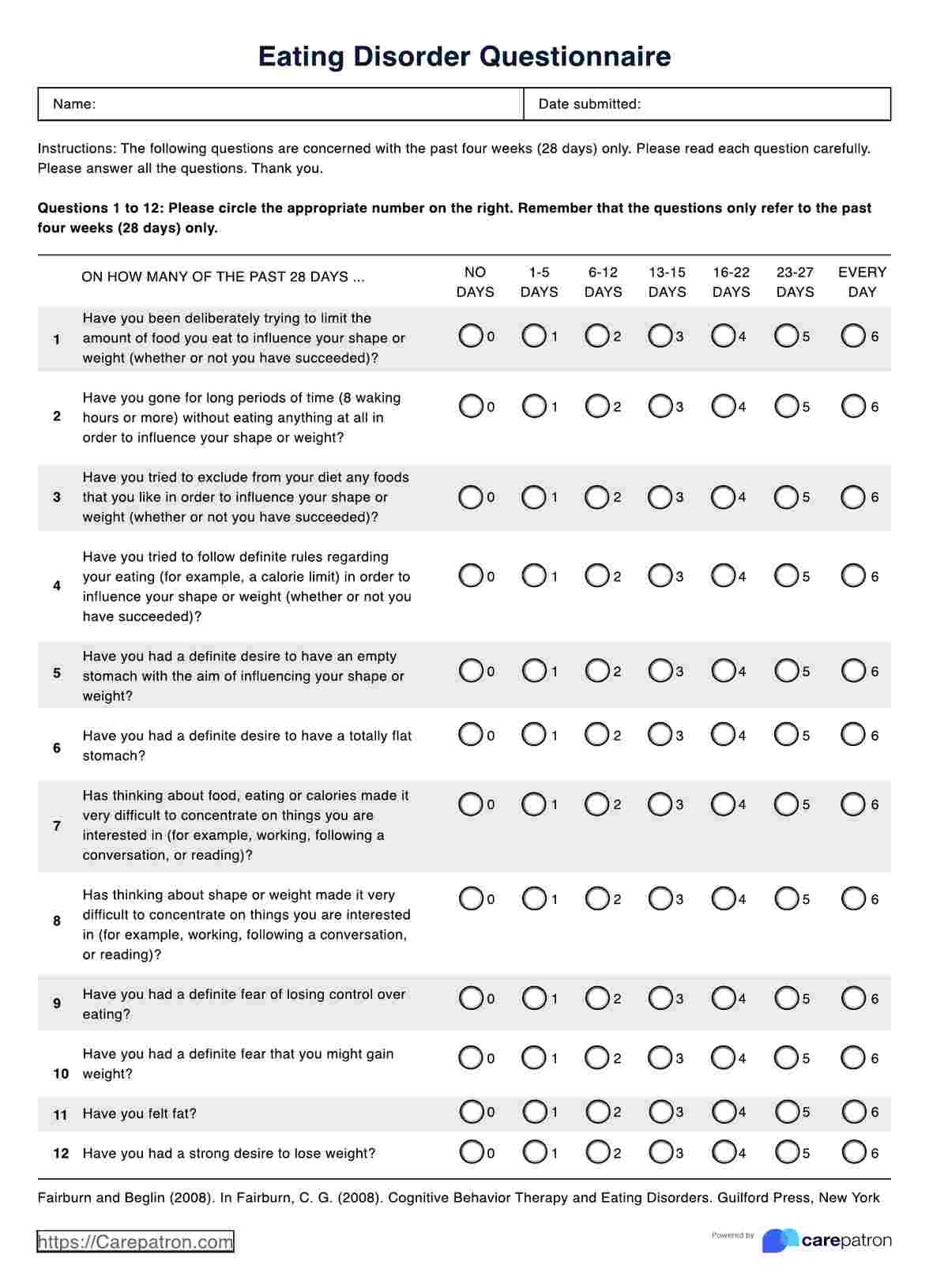Look for signs such as drastic changes in eating patterns, preoccupation with body image, or unexplained weight fluctuations during assessments.

Eating Disorder Questionnaire
Assess eating disorder behaviors with our Eating Disorder Questionnaire. Guide clients towards healthier eating habits & recovery.
Use Template
Eating Disorder Questionnaire Template
Commonly asked questions
Refer patients if they exhibit physical complications, emotional distress, or impaired daily functioning due to their eating behaviors, ensuring they receive specialized care promptly.
Eating disorders can detrimentally affect physical health, mental stability, interpersonal relationships, and overall quality of life.
EHR and practice management software
Get started for free
*No credit card required
Free
$0/usd
Unlimited clients
Telehealth
1GB of storage
Client portal text
Automated billing and online payments











